Pulhamite Rockery & Islet, Worth Park, Crawley
Alan Bishop carried out a 'Condition Survey Report' in Summer 2011. The conservation and repair work was carried out in early 2014. The work was complicated by the fact that the Rockery had been partially dismantled on the right hand side when a service road was built in the 1980s. Four large pieces of "pulhamite" rockwork had been "dumped" on top of the rockery as was evident from the relative positions of the planter pockets and strata lines.
1: Condition Survey Report
Alan Bishop's 'Condition Survey Report' of Summer 2011 revealed that the Pulhamite rocks, marked with a red X, were not in their original positions, having been thrown up there when the adjacent service road was built in the early 1970's. They would have formed part of the Rockery which was removed at this time, and unfortunately there are no photographs of how it appeared before this event.
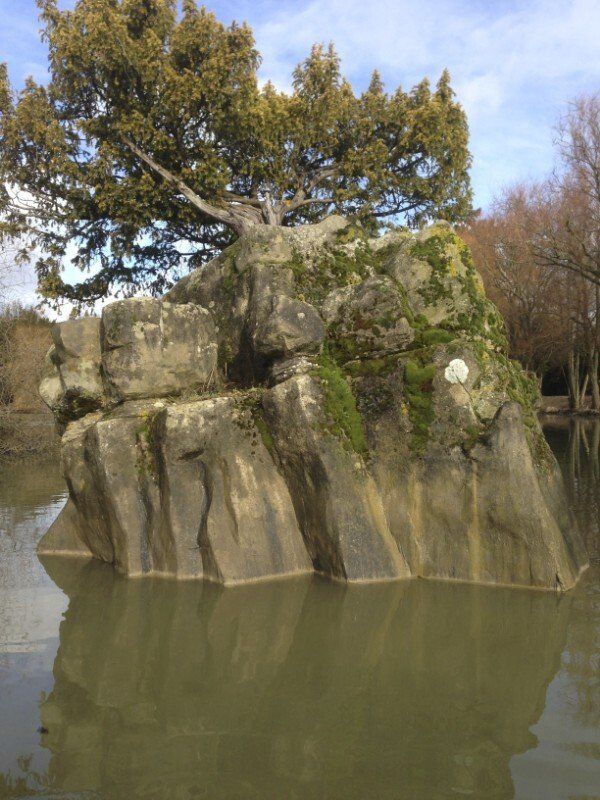
2: Evidence of moved rockwork
This rock clearly shows a planting pocket on its front elevation indicating that it has been moved, from a horizontal plane to a vertical plane.
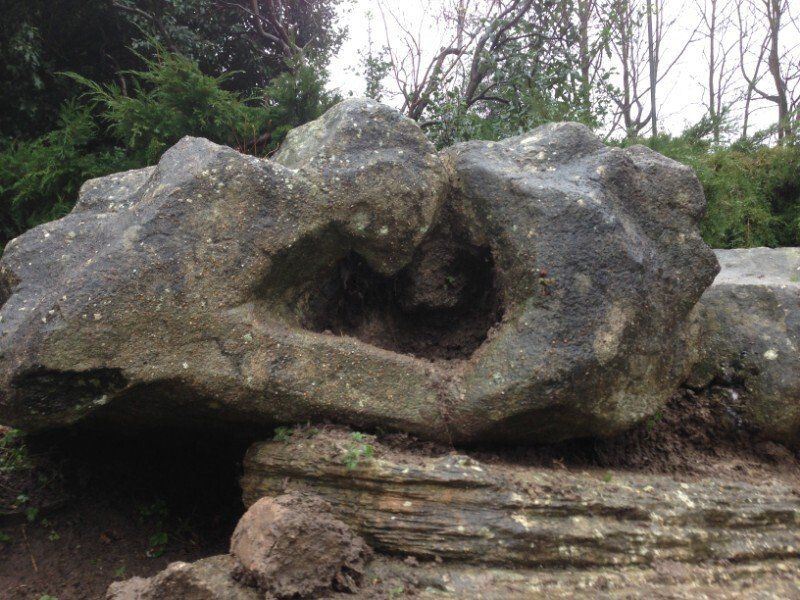
3: Evidence of move
This rock also shows the remains of a planting pocket on the front elevation. The verical/front face is currently on the top of the rock, again indicating that it has been moved from its original position.
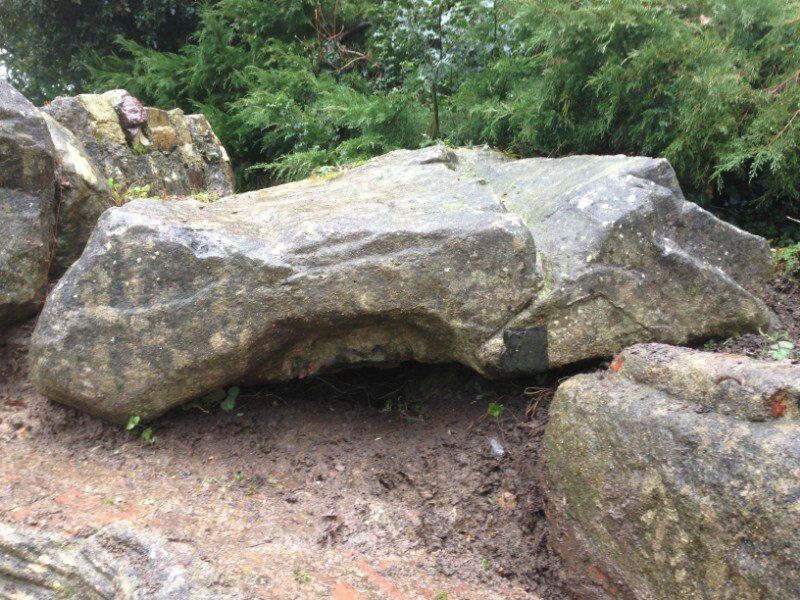
4: Relocating the 'rogue rocks'
The 'rogue' rocks' were moved from their incongruous positions on the top of the rockery and reinstated so that they made sense with the rest of the rock formation.

5: Re configured right hand elevation
View of the re configured elevation with the rogue rocks reinstated together with the pieces of missing 'shale bed' strata recovered from other areas of the site.

6: Stone infill and soil backfill
At some stage, probably in the last 20 years, the space between the last 'pulhamite' rocky outcrop on the left hand elevation, and the main body of the rockery, has been back-filled with soil behind a stone infill wall.
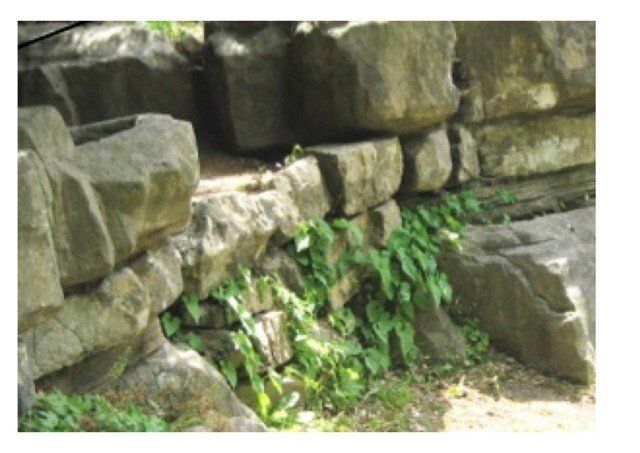
7: Removal of the stone infill wall
At the other end of the rockery, we removed a later addition of stone walling which had been built to allow the area behind to be back filled with soil. The removal of the soil revealed the Pulhamite rockwork beneath.
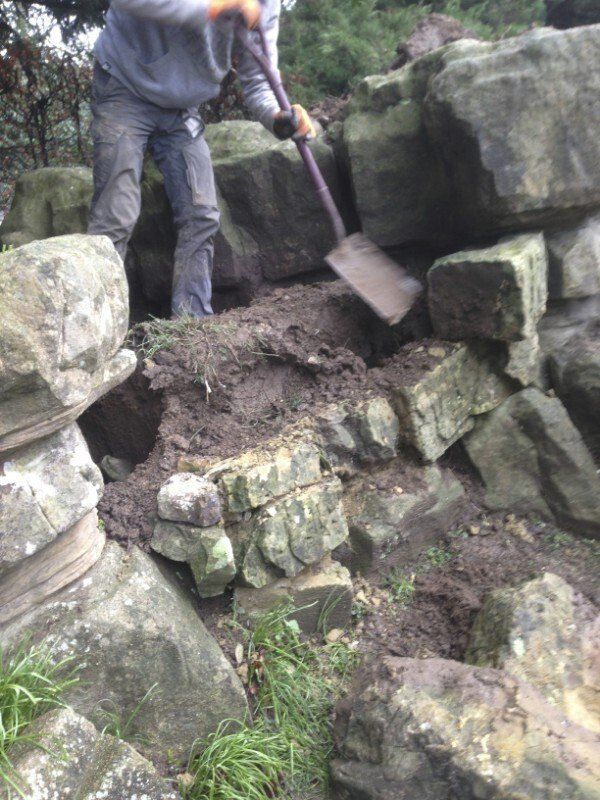
8: Removal of the backfill soil
View of the area after the removal of 2 ton of soil. The area will probably now be turfed and a garden bench installed
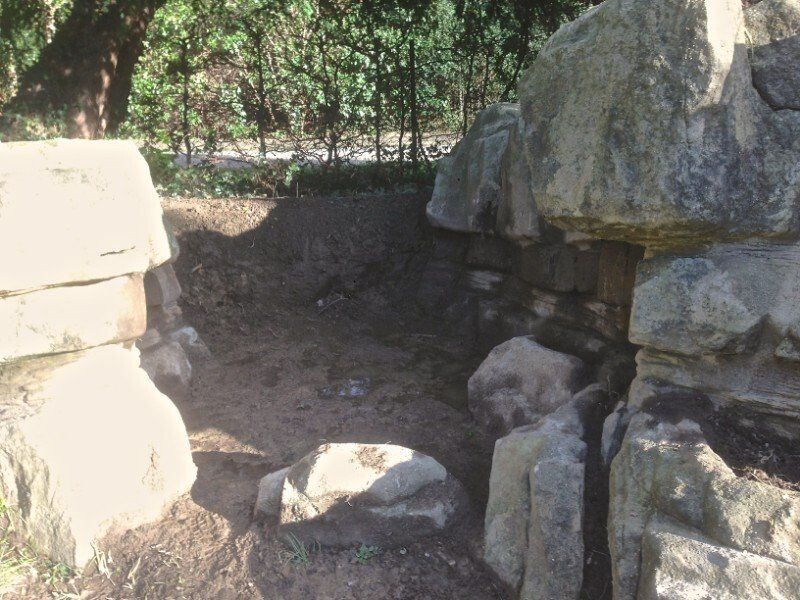
9: General conservation & repair
Elsewhere general repairs were made to cracks using a grout render of sharp sand/cement/lime, all as per the Condition Survey Report's recommendations.
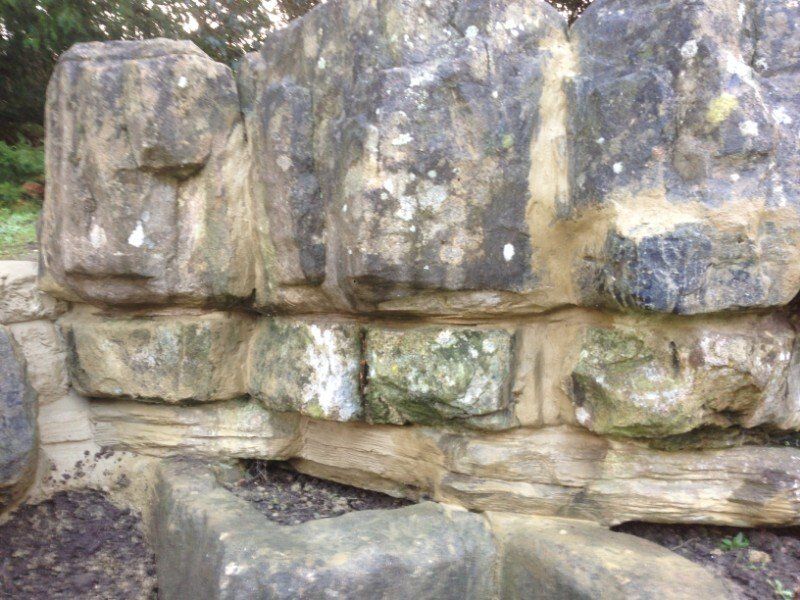
10: Final works on the Rockery
Finally, all planters were refilled with fine top soil prior to a new planting scheme.
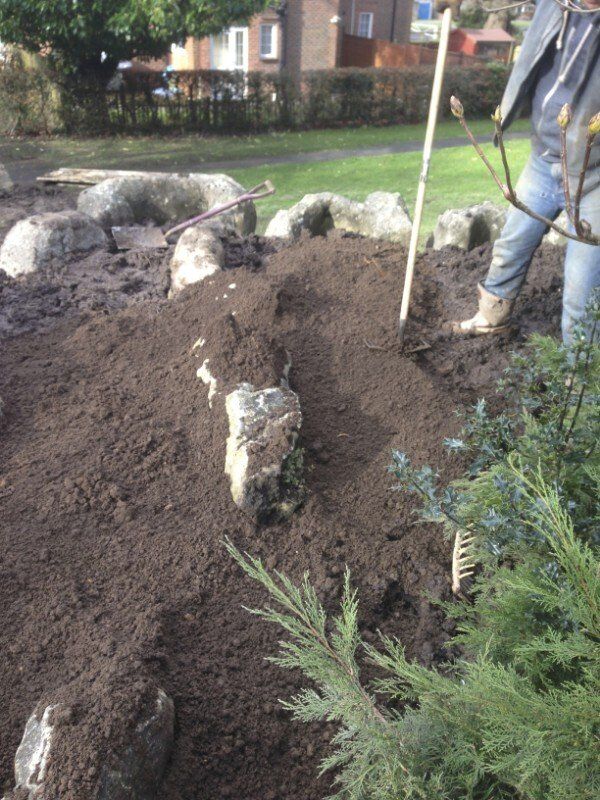
11: The 'Pulhamite' Islet
The lower areas of the rockwork were in need of re-rendering due to water damage caused by the fluctuating levels in the lake.
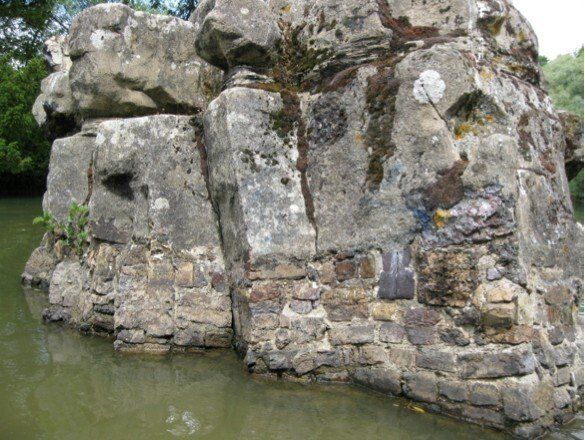
12: The islet showing damage
The 2 photos show the exposed areas of the brick sub structure. As with most Pulhamite rockwork, the sub structure was built up using burnt bricks, brick seconds and clinker mortared together to form the basic shapes of the rockwork.

13: Repair to islet
Work was carried out from a partly submerged platform. The water level was approximately 1m deep at the time. A sharp sand/cement/lime render was applied over the damaged areas of Pulhamite rockwork.
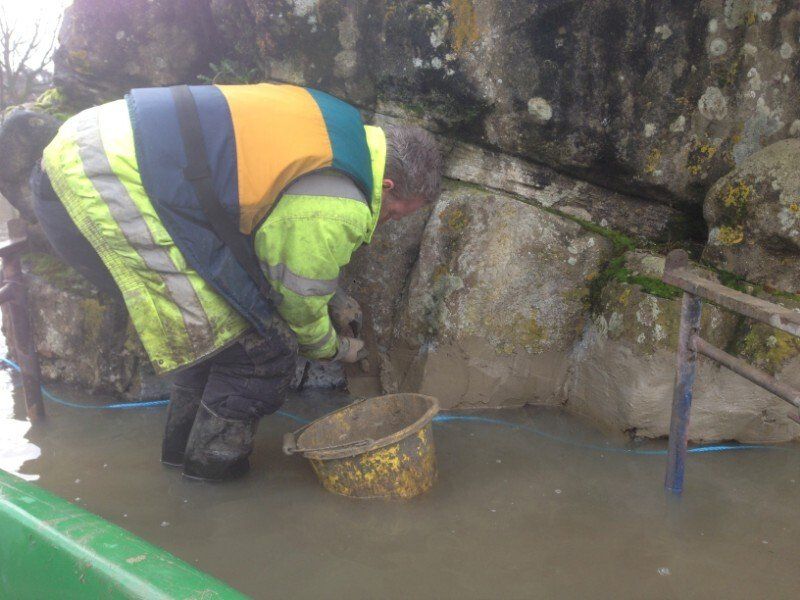
14: Finished render repairs
The finished areas of new Pulhamite - style render where colour-washed with watery masonry paints to disguise the new work.


